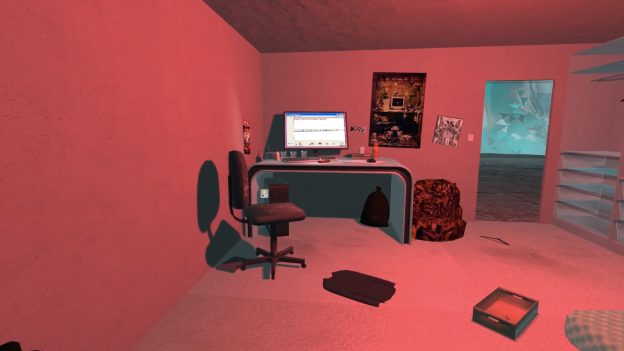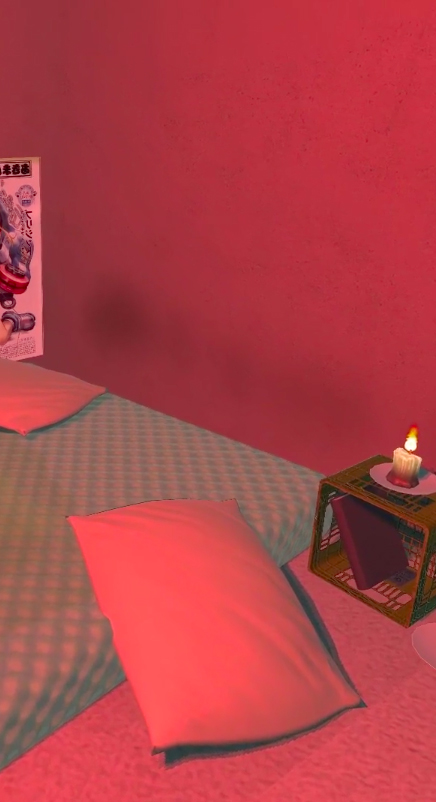with SHRINE MAIDENS OF THE UNSEELIE COURT
a video game by TABITHA NIKOLAI
This is a preview of the video game Shrine Maidens of the Unseelie Court. You are invited to download the full game here for mac or pc.
I’d hoped to offer you ecstasy, but I’m forced to start with mourning. Maybe you are too: mourning a loss acute and endless, mourning something difficult to name, something always just out of reach, mourning something you suddenly realize you never held in the first place. There is no perfect life. So I, and we, have learned the hard way that inside of desire you’ll find impossibility, and grief.
Your desire might be full of grief but also rage, strings of words: proclamations or lamentations or persuasions wrapping round and round the other like fishing line or razor wire. To lure, seduce, break open, or keep out. I’d say that’s where false power plays: desire as the angry, glinting spikes of a pretty trap. Like the desire of the white supremacist to know and denegrate the other, and so maintain and elevate himself. Or the desire of the patriarch to contain and control the woman, and so create and represent himself. To keep her as his mother-mockup and his phallus, both.
Desire like a loss, or like a weapon of the dominant—these desires are taken on by work that follows here. Work that shows how to take these weapons back.
But what of desire as a wild implement, a tool? Desire reckless and wonderful and out of this world, like coming, like orgasms can be. And incidentally yes, where we root the desire we’re describing here is also in sex. Sex lucid and glorious in all kinds of bodies and beings and numbers and organs and entanglements and revelations. Entanglements and revelations which, for us, can be gestured to with a way called queer. You can trace this desire through what follows too—that is, desire as that which can’t be contained or structured into the matrix of the knowable. Beautiful, riotous desire to explode the rigid containers that oppress.
And there is tender, fleeting desire here too: desire like smoke, like breath, like a grandparent’s wistful, loving glance. Desire like a forever-lost moment shared with a stranger and the night sky. Elusive desire that nevertheless persists and quietly sustains. Desire metamorphosing to love, across all that I’ve described above. Desire-turned-devotion in the worst of times, desire as the tender glance, the perfect embrace, the final kiss.
SHRINE MAIDENS OF THE UNSEELIE COURT

Shrine Maidens of the Unseelie Court is a walking sim and text adventure set in a nameless world-building project that explores queer community in post-apocalyptic setting. As with most sci-fi, it’s more about circumstances of the present than prognostication. We live in cataclysmic and catalytic times.
The game explores feelings of isolation within suburbia and an ambivalence about online connectivity as a mode of circumventing it. The opportunity to socialize in a disembodied way can be highly therapeutic. Nevertheless, neither the architectures of these spaces, nor the actors within them, are inherently benign.
You are invited to download the game here for mac or pc.
The track Gaze that appears in the video/game is by Ultrademon, you can learn more about her work at http://ultrademon.net.
ANNE MARIE WIRTH CAUCHON editor
Anne Marie Wirth Cauchon is Editor-in-Chief of Stillpoint Magazine, and Creative Director of the PrairieCare Institute’s Center for Applied Psychoanalysis, the mother of two, a PhD candidate in English and Comparative Literature at the University of Minnesota, and the author of the novel Nothing.
TABITHA NIKOLAI artist
Tabitha Nikolai is a trashgender gutter elf and low-level cybermage raised in Salt Lake City, Utah, and based in Portland, Oregon. She creates the things that would have better sustained her younger self-simulations of a more livable future, and the obstacles that intervene. These look like: fictive text, videogames, cosplay, and earnest rites of suburban occult. Currently she teaches and manages galleries for the Portland State University School of Art + Design. Her work has been shown at the Portland Institute for Contemporary Art, the Utah Museum of Contemporary Art, Vox Populi in Philadelphia, Ganka Gallery in Tokyo, and has been covered by i-D Magazine, The New York Times, and Art in America. She hopes you’re doing okay.
© Copyright for all texts published in Stillpoint Magazine are held by the authors thereof, and for all visual artworks by the visual artists thereof, effective from the year of publication. Stillpoint Magazine holds copyright to all additional images, branding, design and supplementary texts across stillpointmag.org as well as in additional social media profiles, digital platforms and print materials. All rights reserved.




